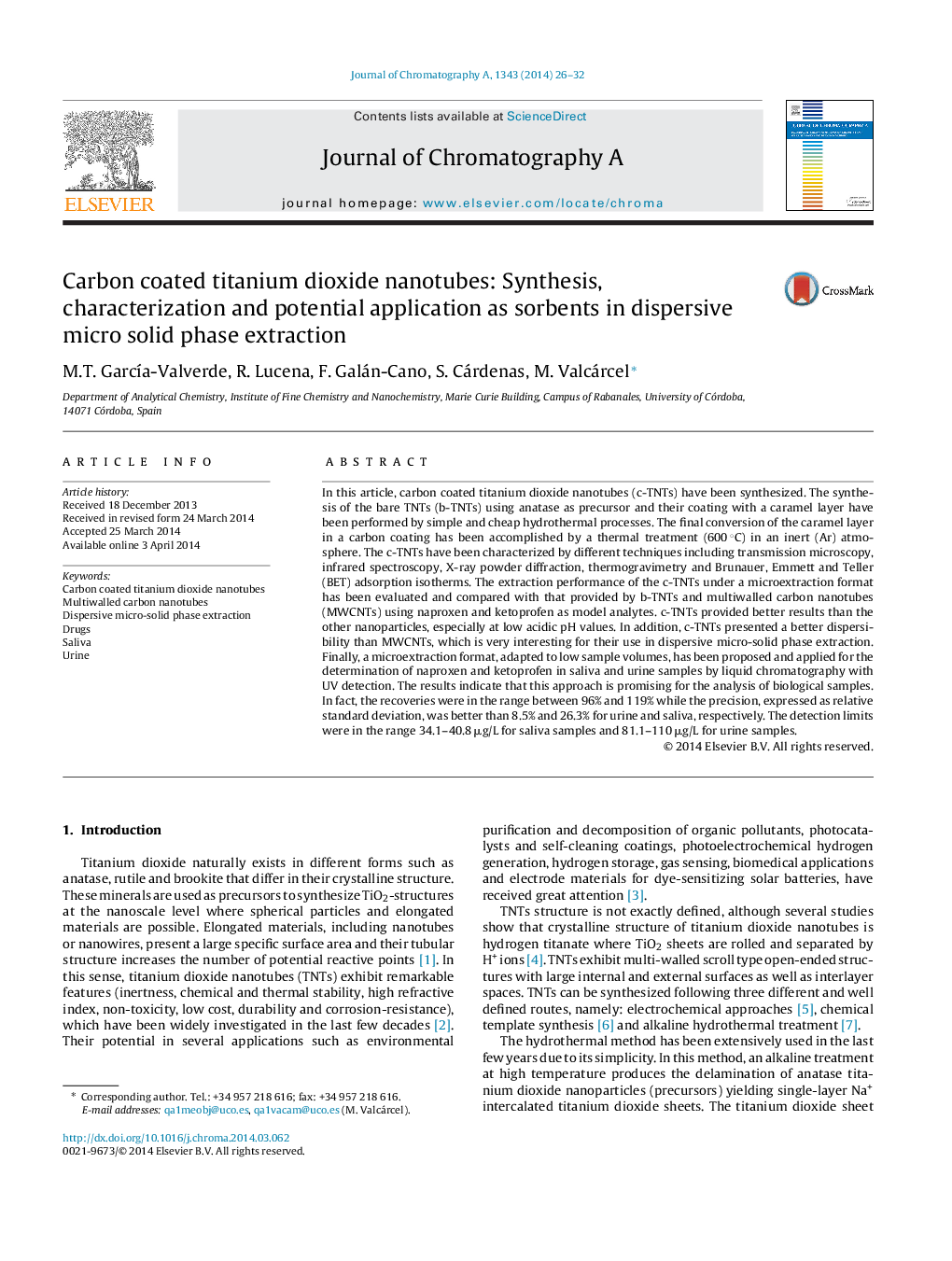| Article ID | Journal | Published Year | Pages | File Type |
|---|---|---|---|---|
| 1200046 | Journal of Chromatography A | 2014 | 7 Pages |
•Carbon coated titanium dioxide nanotubes are synthesized by a simple method.•The new material has been characterized by TEM, IR, XRD, TGA and BET.•The extraction performance of the novel material has been evaluated and compared.•c-TNTs TDNTs present a better dispersibility than MWCNTs.•The good dispersibility of c-TNTs makes them a good sorbent for dispersive SPE.
In this article, carbon coated titanium dioxide nanotubes (c-TNTs) have been synthesized. The synthesis of the bare TNTs (b-TNTs) using anatase as precursor and their coating with a caramel layer have been performed by simple and cheap hydrothermal processes. The final conversion of the caramel layer in a carbon coating has been accomplished by a thermal treatment (600 °C) in an inert (Ar) atmosphere. The c-TNTs have been characterized by different techniques including transmission microscopy, infrared spectroscopy, X-ray powder diffraction, thermogravimetry and Brunauer, Emmett and Teller (BET) adsorption isotherms. The extraction performance of the c-TNTs under a microextraction format has been evaluated and compared with that provided by b-TNTs and multiwalled carbon nanotubes (MWCNTs) using naproxen and ketoprofen as model analytes. c-TNTs provided better results than the other nanoparticles, especially at low acidic pH values. In addition, c-TNTs presented a better dispersibility than MWCNTs, which is very interesting for their use in dispersive micro-solid phase extraction. Finally, a microextraction format, adapted to low sample volumes, has been proposed and applied for the determination of naproxen and ketoprofen in saliva and urine samples by liquid chromatography with UV detection. The results indicate that this approach is promising for the analysis of biological samples. In fact, the recoveries were in the range between 96% and 119% while the precision, expressed as relative standard deviation, was better than 8.5% and 26.3% for urine and saliva, respectively. The detection limits were in the range 34.1–40.8 μg/L for saliva samples and 81.1–110 μg/L for urine samples.
